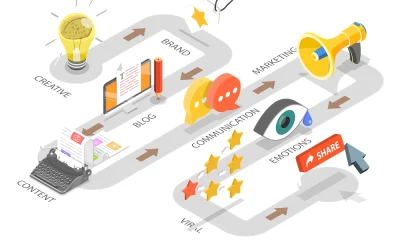Marketing
5 Important UI/UX Metrics to Focus On

Peter F. Drucker, the father of management thinking, was right when he wrote, “What gets measured gets managed.”
Unfortunately, this wisdom is yet to fully permeate into the general consciousness of the UI/UX world. You can’t justify investing in UX design without accurate results and figures on how UI impacts consumer behavior.
But user experience (UX) is subjective by nature.
Sure, we can measure its effects on product engagement (conversions, page views, etc.) But how do we directly measure and benchmark UX? The truth is, there is an awful lot you could count. This article will explore the critical UX metrics that you should be tracking.
1. Usability
Usability is undoubtedly an excellent barometer of UX. After all, something difficult to use or navigate will not provide a great user experience.
An excellent way to gauge the usability of a product/service is to ask users how they would describe a product from easy to use to extremely hard to use. System Usability Scale (SUS) is a handy tool commonly used to measure usability.
The scale consists of a 10-point questionnaire with 5 answers: Strongly disagree, Disagree, Neutral, Agree, and Strongly Agree.
Some sites, such as usability.gov, provide a SUS template that you can use to determine the SUS score for your product/service. The higher the score, the better the usability rating.
Although many other factors can come into play, poor scores can be mapped to UI problems. However, a great UI can help to enhance a product’s usability.
For better usability, leverage the services of reputable user experience design agencies, like these UI/UX agencies.
2. Customer Satisfaction
Customer satisfaction plays a critical role in determining the quality of the user experience provided by a digital product. After all, a bad experience is unlikely to lead to satisfied customers.
It’s hard to quantify customer satisfaction. However, you can leverage surveys alongside customer feedback to gauge how your products satisfy your customers. But how do you benchmark customer satisfaction?
One way is to use the Net Promoter Score (NPS). This KPI is often used to measure customer loyalty and satisfaction. With this method, users are asked one question to determine the NPS. For example, you can ask, “On a scale of 1 – 10, how likely are you to recommend this product to a friend?
The answers are then put into three categories:
- Detractors: 0 – 6
- Passives: 7 – 8
- Promoters: 9 – 10
Net Promoters Score (NPS) = (No. of promoters – No. of detractors) / number of participants x 100. For instance, if you survey 100 participants and return an NPS value of less than 50%, that indicates a severe flaw with your products.
3. Time on Task
Most of the time, this metric is also known as task completion time. Time on task is the de facto measure of efficiency and productivity.
This metric measures the length of time users take to complete a task on your website. For example, you can record the time to complete a task, like filling out a form, then calculating the average.
4. Task Success
Task success measures the rate at which users complete a specific task.
The success could be anything from the number of users who reach a particular stage in a mobile app to those who unlock a unique feature on a website, etc.
For the success rate to be a great measure of the effectiveness of UX, having a clear definition of success/failure is paramount.
For example, if 80 out of 100 users completed a task successfully, the task success rate would be 80%. Due to the large sample size, the Margin of Error at a 90% Confidence Level would be +-8%. In simpler terms, we are 90% confident that the task success rate falls between 72% and 88%, which is excellent for your product/website.
What other UX metrics do you consider essential to measure? Contact us on Facebook.






